Zenith Academy Georges Favre-Jacot with Fusee-Chain – hands-on with live photos, specs and price

When you think about Zenith Watches, you might first have in your mind the very cool high-frequency El Primero chronographs. It is already quite a piece of engineering (especially considering its 1960s development). However, Zenith shouldn’t be relegated to a chronograph manufacture because they are capable of quite a load of horological sweetness. For its 150th anniversary, the Le Locle based manufacture decided to introduce a watch with a unusual but really impressive feature: a fusee-chain. Here is the Zenith Academy Georges Favre-Jacot.
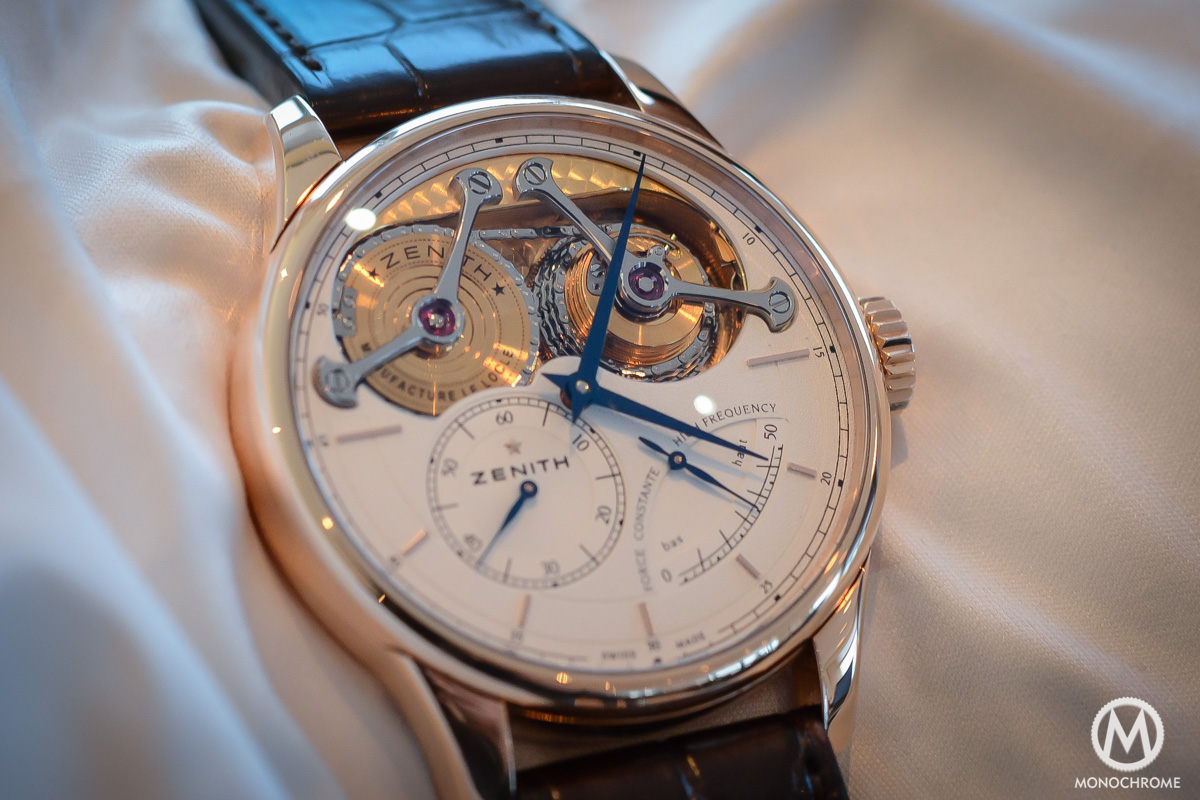
Zenith Watches was founded at Le Locle (Switzerland) in 1865 by Georges Favre-Jacot, a youthful native of the village barely 22 years of age. He founded its factory. Factory is an important word here as he created a space that had spacious light-filled workshops built in a location where they still stand today. They were the first to be fitted with electric lighting and he assembled all the region’s key talents there. To celebrate the 150th anniversary of its foundation, Zenith is not just creating a new limited edition of the El Primero (its best-seller) but also comes with a brand new watch and quite an impressive movement.
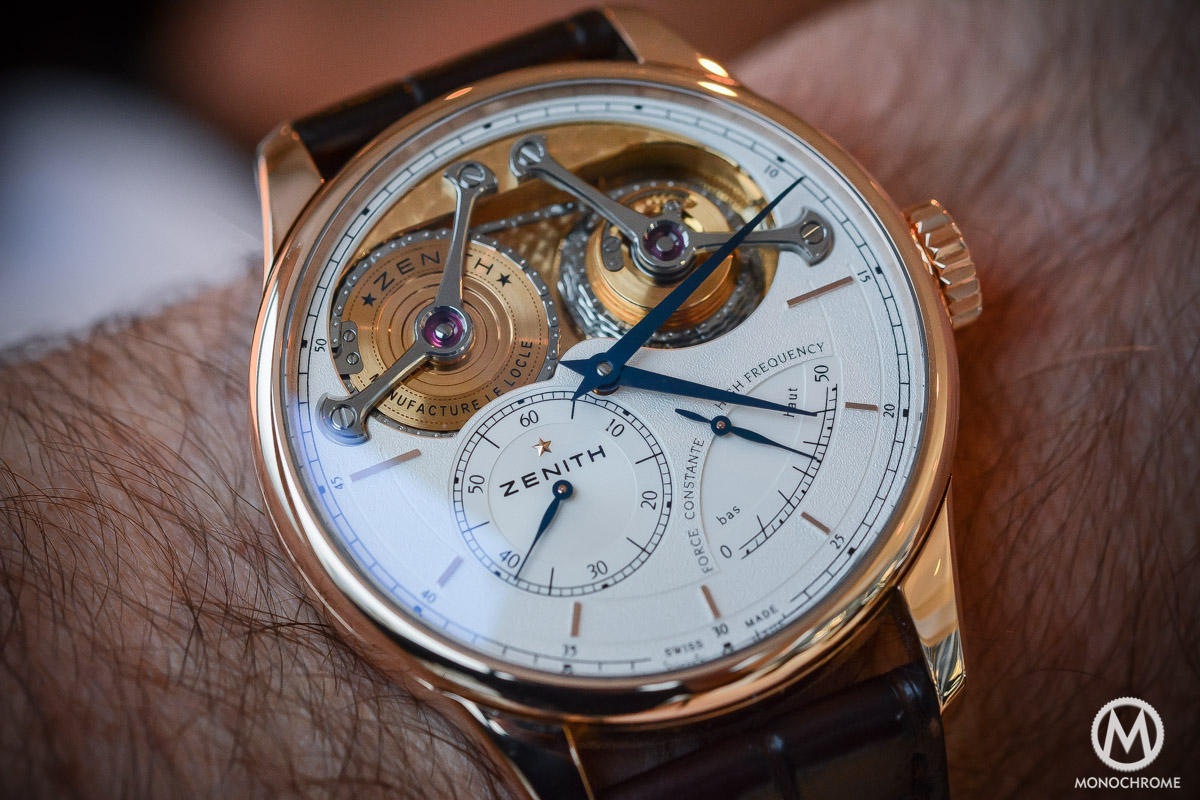
The main interest of this watch is not its 45mm 18k pink gold case or its grained opaline dial. What really makes a hit in the Zenith Academy Georges Favre-Jacot is its unusual and technically impressive fusee-chain mechanism located on the top half of the dial.
Why a fusee-chain?
Traditionally, a mechanical watch receives its energy from a mainspring (or more) located in a barrel. By applying tension to a spring, it will naturally tend to unwind and thus, this unwinding effect provides energy to the gears and to the escapement. This simple mechanism has however one main fault. Of course, a stronger and longer mainspring will deliver more power and thus a longer power reserve. However, the stronger a spring is, the less stable / constant it will be to deliver its energy. The way it will deliver energy is stronger when fully wound and lower when close to the end of the power reserve. It is a natural effect that only a complex and costly constant force mechanism (such as a remontoir d’egalité) can beat.
A fusee-chain mechanism works approximately in the same way. A spring is stretched and he will naturally tend to unwind to deliver energy. However, the barrel here is linked to a chain and a fusee that works like the rear derailleur of a bicycle. The aim is to provide a constant flow of energy, regardless of the conditions. In order to bring a constant torque, the chain linked to the barrel will unfold around a variable circumference element shaped in a conical display, the fusee. This will counteract the negative effect of the non-linear unwinding of the mainspring and thus creating a constant delivery of torque to the escapement.
In the context of the Zenith Academy Georges Favre-Jacot, we can find this complex mechanism highlighted in a large aperture from 9 to 3 on the dial. We said complex because the development is not easy in order to calculate precisely the shape of the fusee regarding the torque delivered by the mainspring but mainly because of the number of parts required. The 18cm chain is composed of no fewer than 575 parts (of course all finished with a nice polishing). This mechanism is made to provide 50 hours of constant energy to the watch.

The other interesting features comes from the escapement itself, as the Zenith Academy Georges Favre-Jacot has Zenith’s typical high-frequency mechanism. The hand-wound El Primero 4810 movement ticks at 5hz / 10 beats per seconds / 36.000 bph. The main interest is that the higher the frequency, the better the precision. Combined with the constant force fuse-chain mechanism, we can expect the Zenith Academy to be both precise at a certain moment and accurate over its whole power reserve.
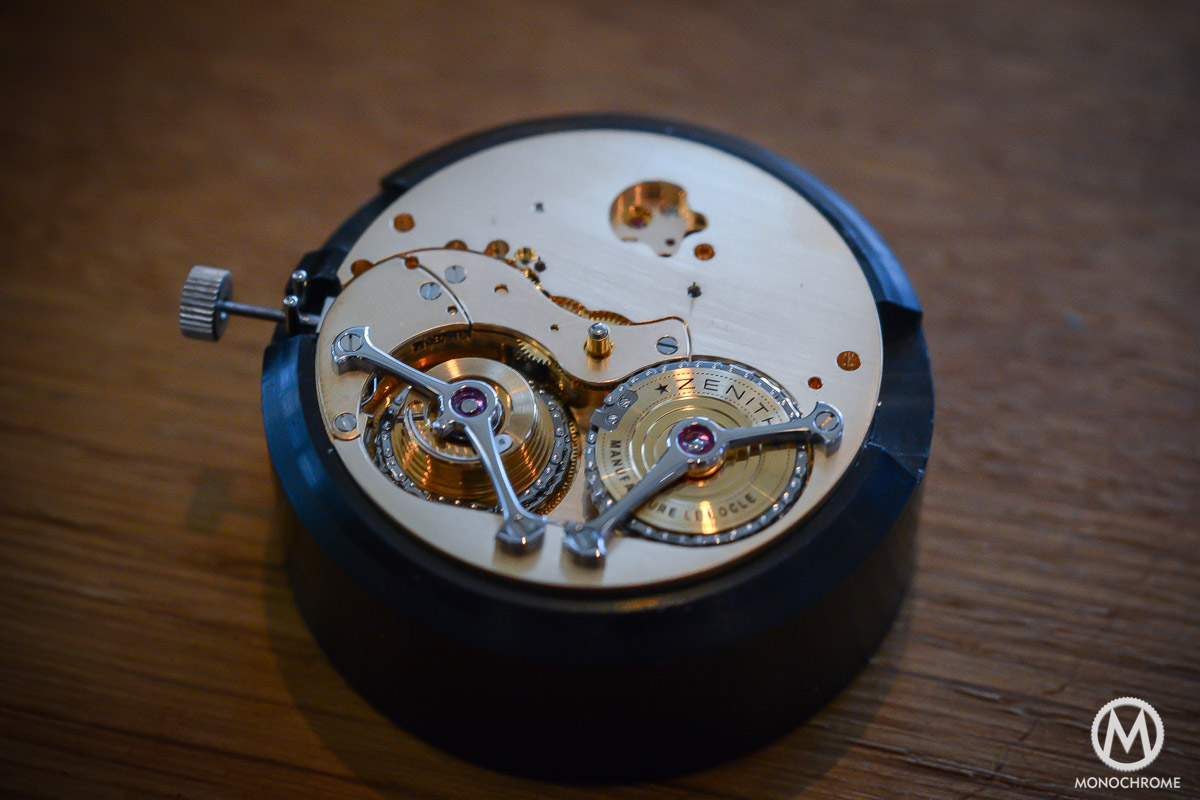
The movement is of course finished to Haute-Horlogerie standards, with Geneva stripes, fine circular graining, polished bevelled angles and is plated in pink gold. The movement is large (37mm) but surprisingly slim (5.9mm) considering the mechanism it features.
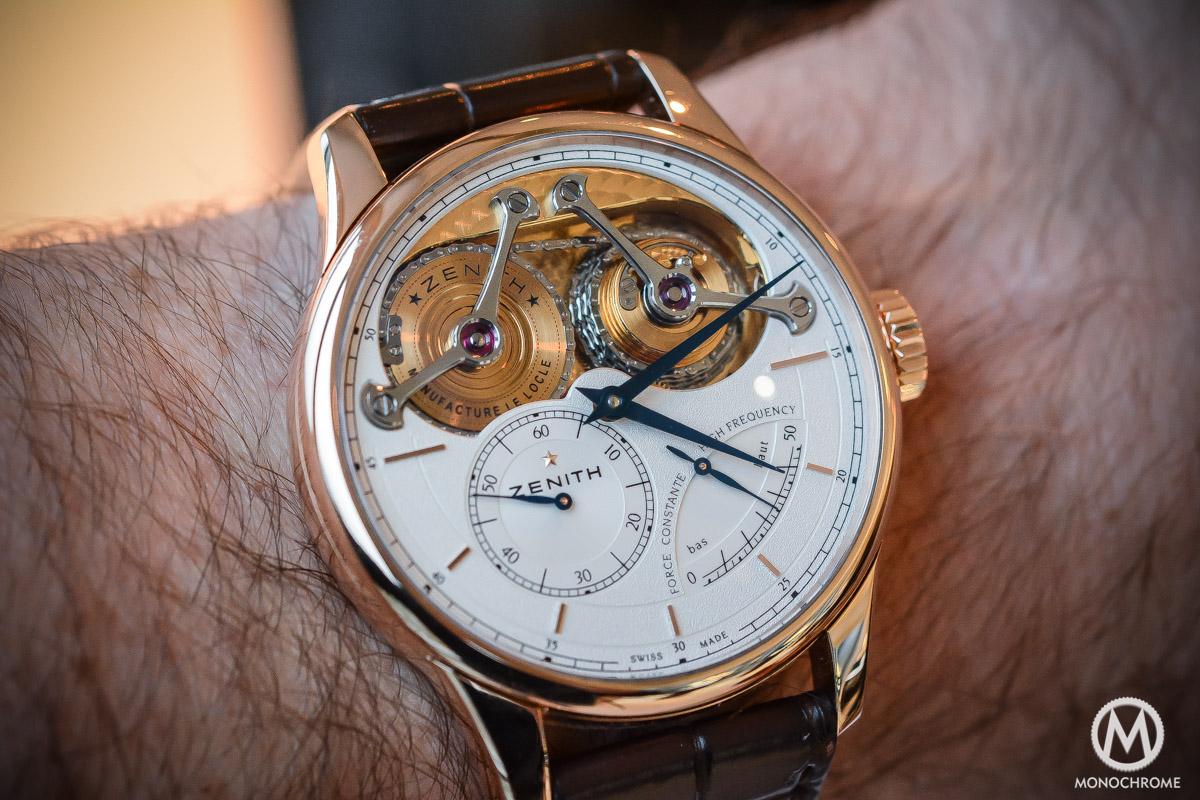
Besides showing this dramatic fuse-chain mechanism on the top half, the dial of the Zenith Academy Georges Favre-Jacot shows a grained opaline silvery finish and blued hands. The barrel and the fuse are held in place by two superbly polished and chamfered bridges. It features the hours and minutes on the central axis, a small-second dial at 7:30 and a power reserve at 5.
The Zenith Academy Georges Favre-Jacot with Fuse-Chain is limited edition of 150 pieces and is priced at 61.500 Euros before taxes (approx. 74.000 Euros with EU taxes). More details on ZenithWatches.com.

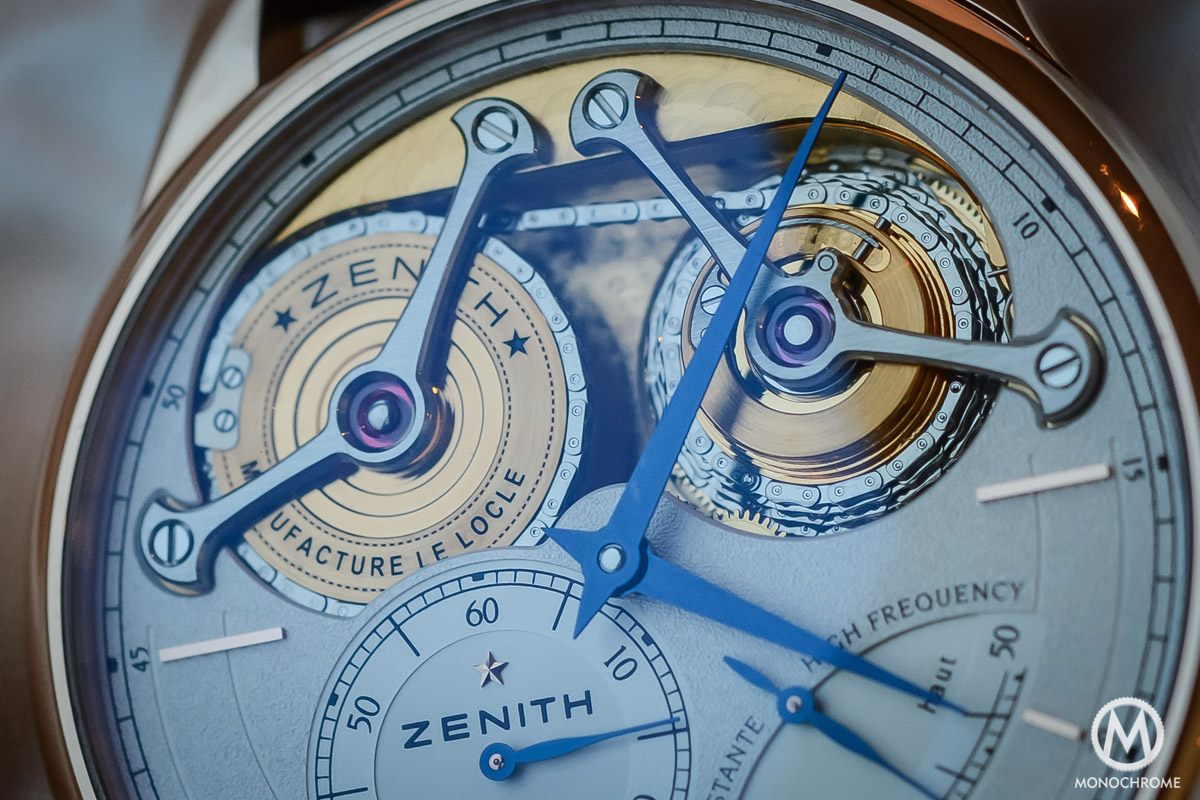
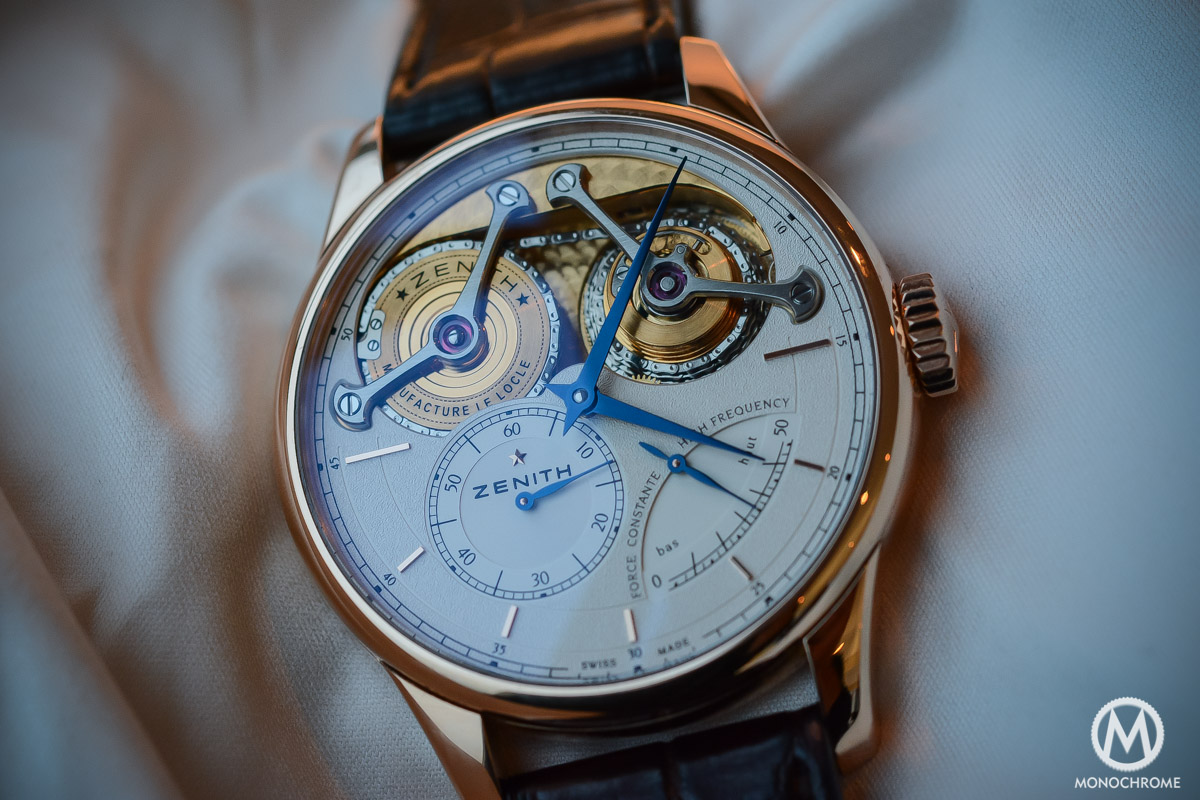

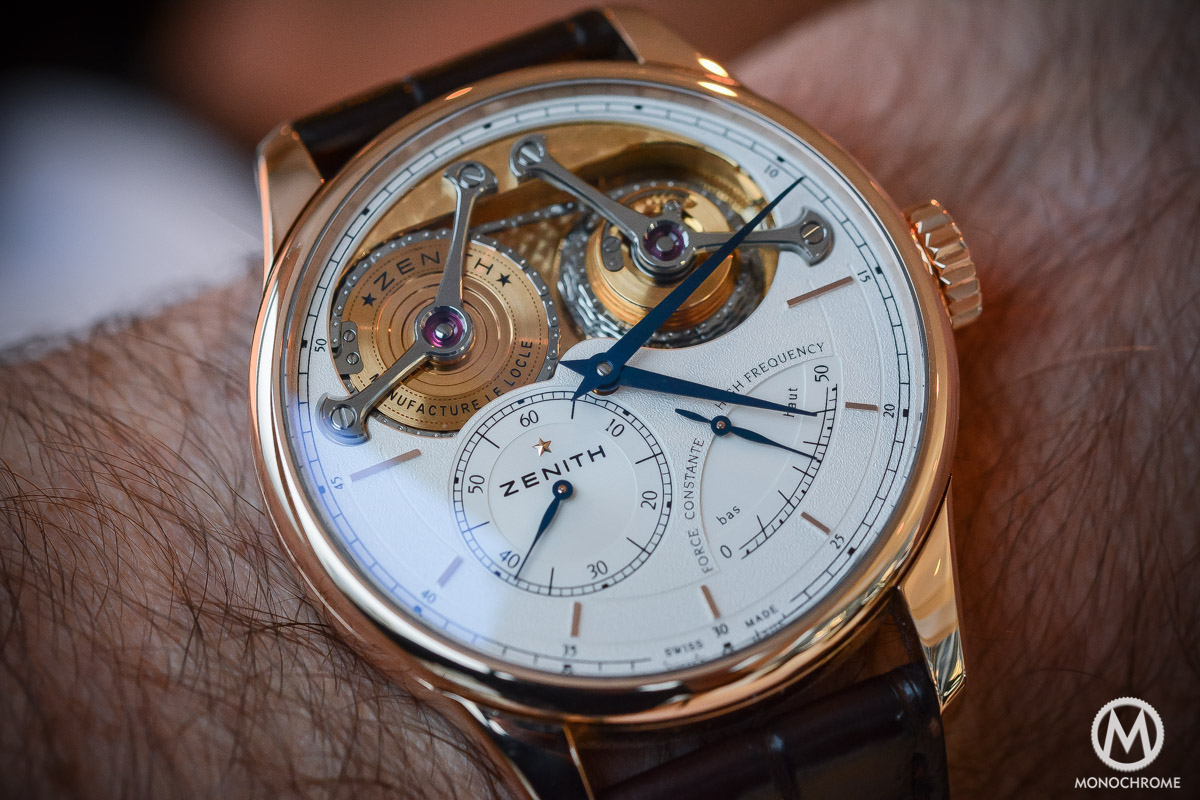
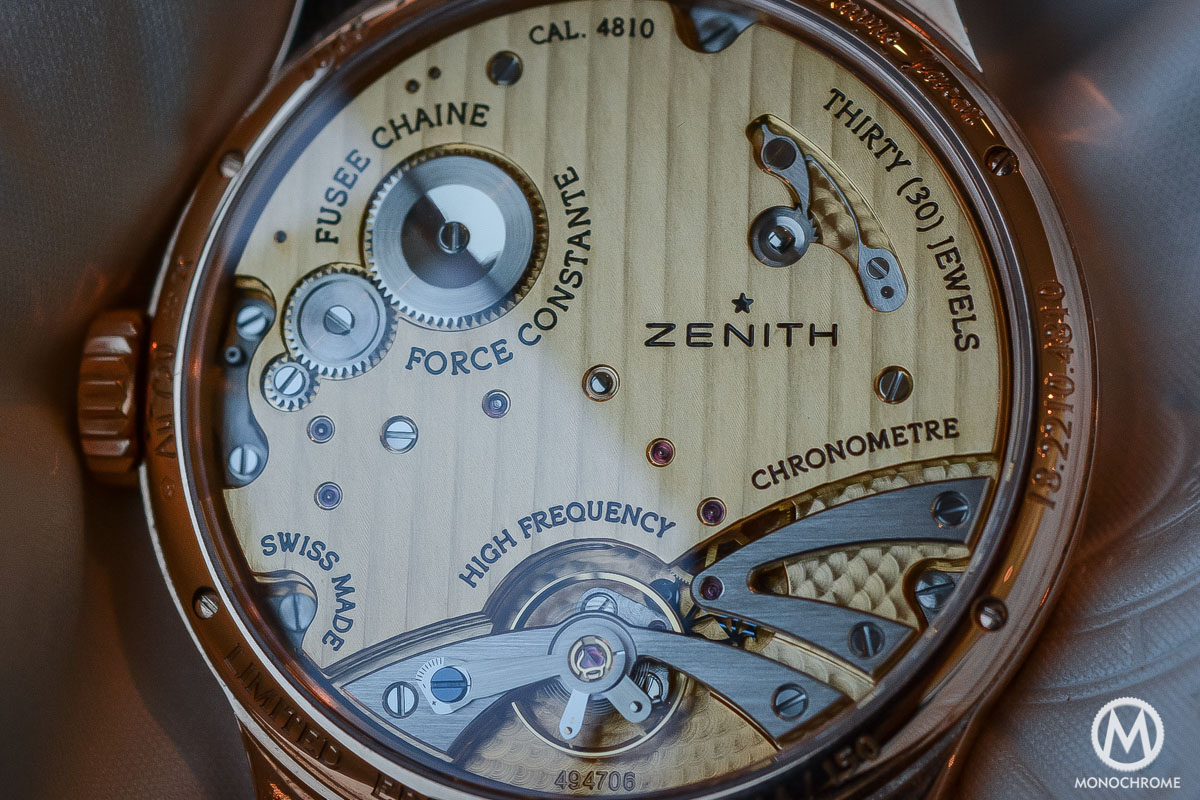
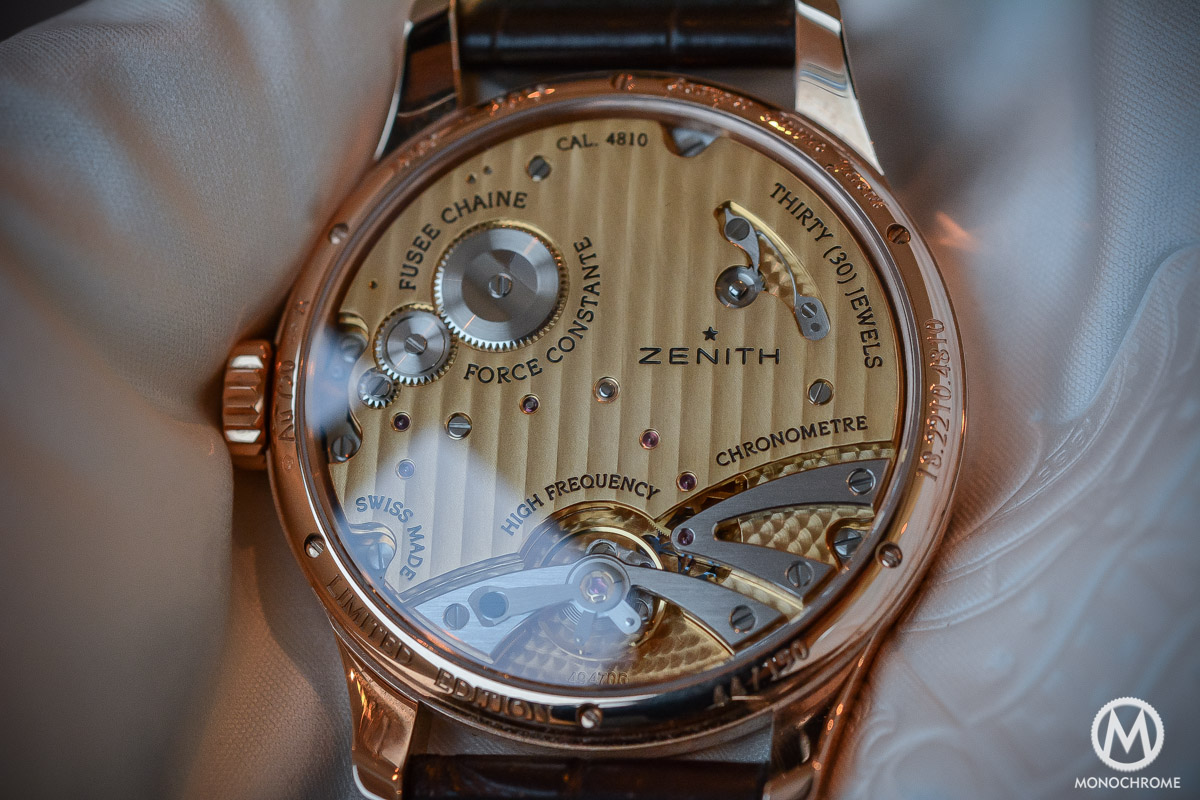

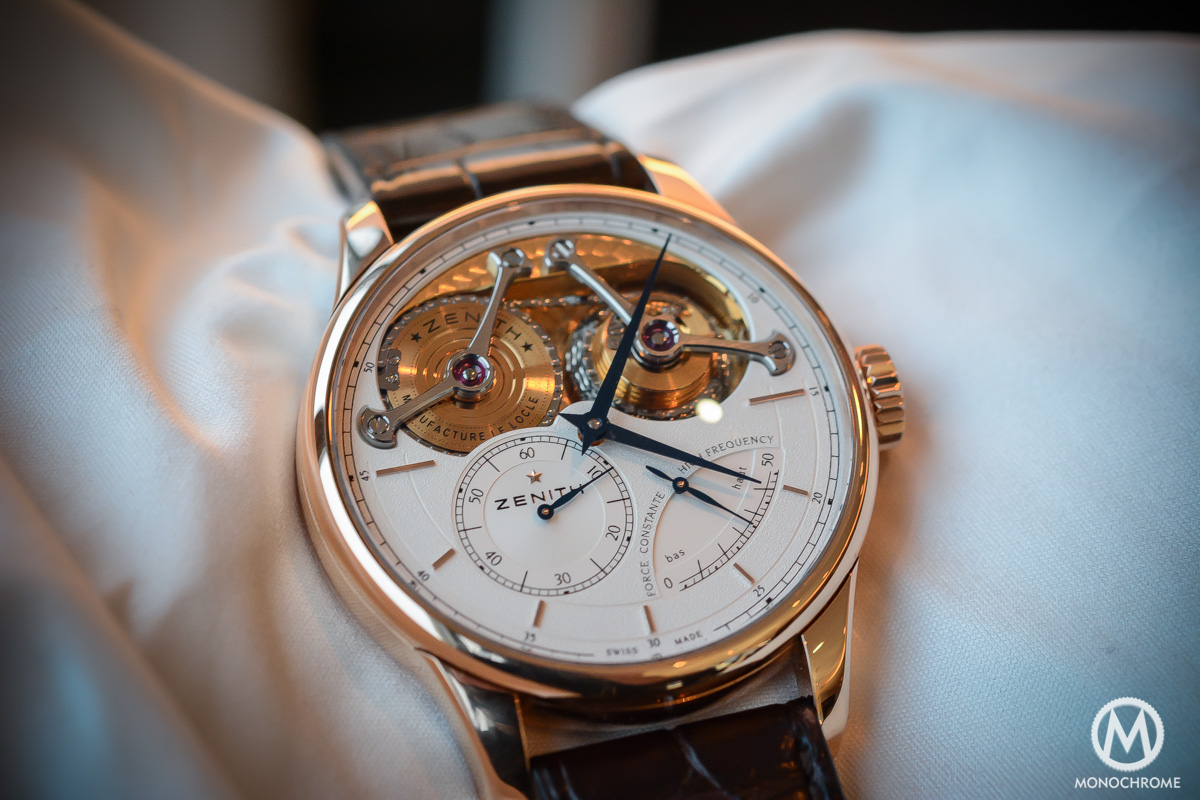





3 responses
Zenith is one of my favourite brands and by creating this watch, Zenith has proved that it can create truly great timepieces.
Brice, I’m surprised by your use of “fuse” rather than “fusée” or “fusee”. Wikipedia tells us that the english word is “fusee”, so does the FH’s Illustrated Professional Dictionary of Horology.
@Jacques,
you’re totally right and I do have to apologize. As you can see, it’s already updated with fusee (from the french ‘Fusée’).